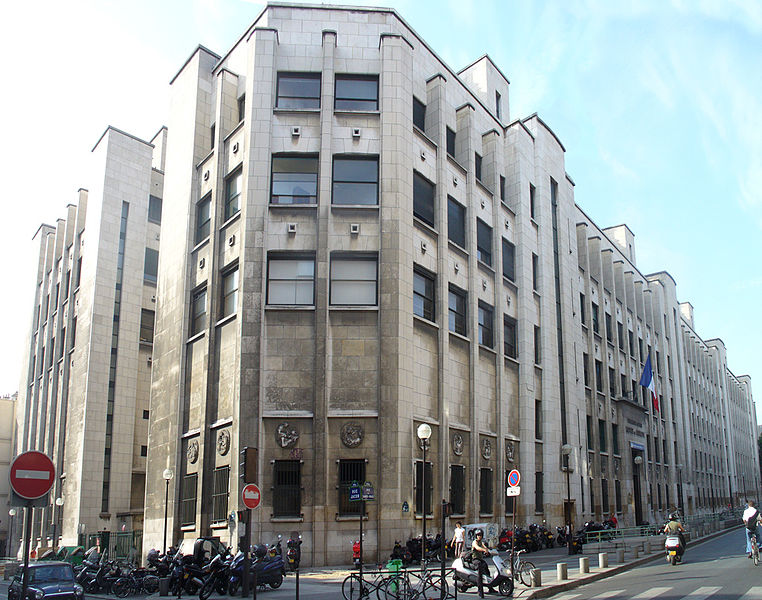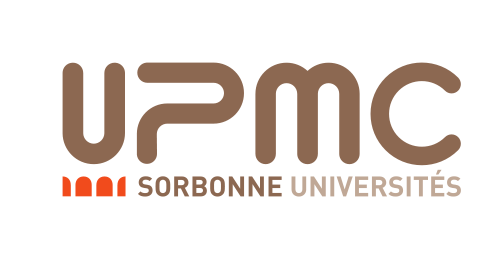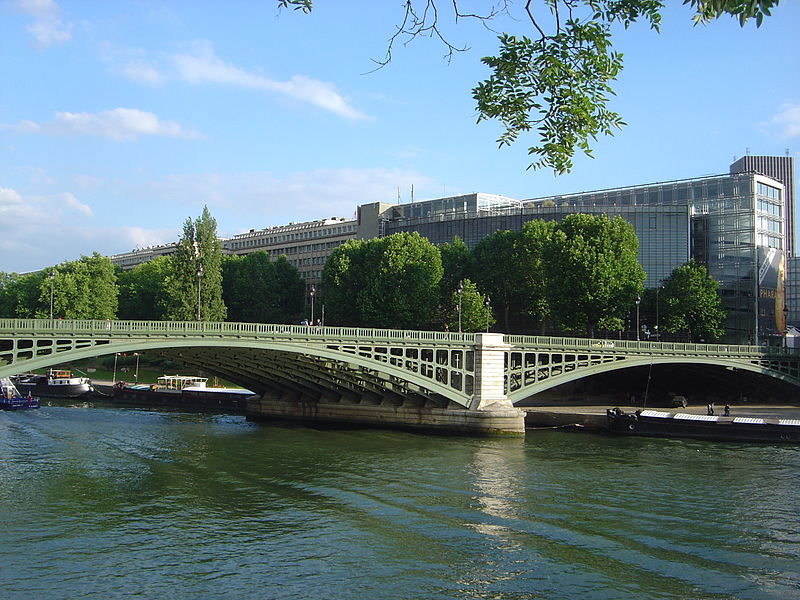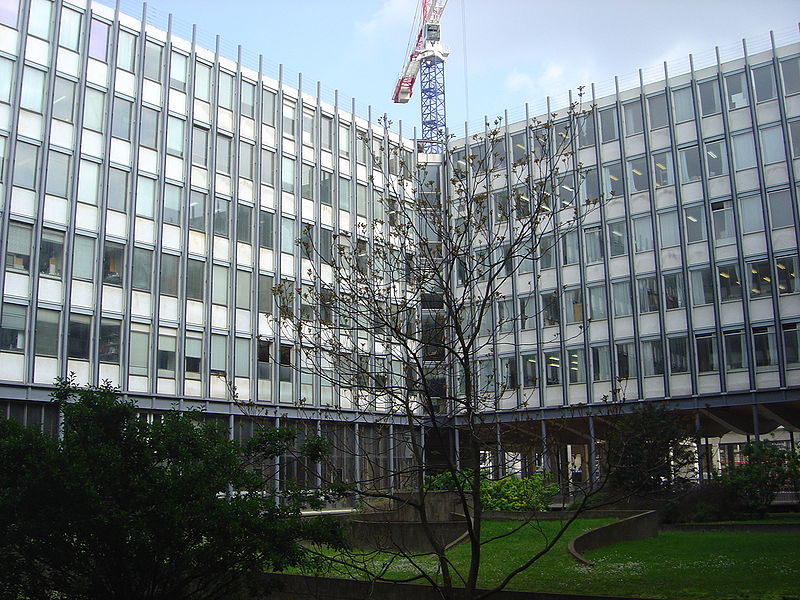<Back to Index>
- Université Paris V René Descartes, 1971
- Université Paris VI Pierre et Marie Curie, 1971
PAGE SPONSOR
Paris Descartes University, is one of the main French research universities, with a strong focus on:
- Medical Sciences (Medicine, Dental Medicine, Pharmacy, Psychology)
- Social sciences (Sociology, Anthropology, Linguistics, Demographics, Science of Education) located at the Sorbonne
- Mathematics
- Law
Paris - Descartes University is located in the 5th arrondissement of Paris and it is one of the most prestigious European universities for medical sciences, social sciences and research in psychology.
The University strongly focuses on innovation and modern approach of social sciences, the new dual master's degree ("Economics and Psychology" and "Cogmaster") in Partnership with other important institution such as the ENS and Paris1 Panthéon - Sorbonne shows the opportunities that are offered for the students who are really involved into research and modern approach of social sciences.
The University Paris Descartes also supports teaching and research in humanities and social sciences grounded on fieldwork, participant observation and ethnography. The school for humanities and social sciences includes six research centers in anthropology, sociology, philosophy and linguistics.


The Paris VI University (French: Université Paris VI), or the Pierre and Marie Curie University (French: Université Pierre et Marie Curie, UPMC), is a university located on the Jussieu Campus in the Latin Quarter of the 5th arrondissement of Paris, France.
It was established in 1971 following the division of the University of Paris, and is a principal heir to its Faculty of Sciences.
UPMC is the largest scientific and medical complex in France, active in many fields of research with scope and achievements at the highest level, as demonstrated by the many awards regularly won by UPMC researchers, and the many international partnerships it maintains across all five continents. Several university rankings have put UPMC at the 1st place in France, and it has been ranked as one of the top universities in the world.
It has over 125 laboratories, most of them associated with the Centre national de la recherche scientifique (CNRS). Some of its most notable institutes and laboratories include the Institut Henri Poincaré, Institut d'Astrophysique de Paris, Laboratoire d'informatique de Paris 6 (LIP6), Institut de mathématiques de Jussieu / Chevaleret (shared with University Paris Diderot) and the Laboratoire Kastler - Brossel (shared with École Normale Supérieure).
The university's Faculty of Medicine includes the Pitié - Salpêtrière and Saint - Antoine hospitals (the latter itself being the successor to Saint - Antoine - des - Champs Abbey).
The campus was built in the 1950s and 60s, on a site previously occupied by wine storehouses. The Dean, Marc Zamanski, saw the Jussieu campus standing as a tangible symbol of scientific thought in the heart of Paris, with the Faculty of Science, set in the Latin Quarter, as part of an intellectual and spiritual continuum linked to the university history of Paris. In 1968, the Paris Faculty of Science was divided into a number of different universities. The University of Paris 6 became the scientific center and was set up in 1971; it shares the Jussieu campus with the University of Paris 7 and the Paris Geophysical Institute (Institut de Physique du Globe). In 1974, the University of Paris 6 chose a prestigious champion when it adopted the name "Université Pierre et Marie Curie", after Pierre and Marie Curie, and ever since has endeavored to perpetuate the scientific legacy of these forebears. UPMC is now the largest scientific and medical complex in France, active in all fields of research with scope and achievements at the highest level.
In 2008 the university joined the association Paris Universitas changing its logo accordingly and adding the name of the association after its own. Two years later the association dissolved and reformed as PRES (pôle de recherche et d'enseignement supérieur) Sorbonne Universités, reuniting the Pantheon - Assas Paris II University, the Paris - Sorbonne University (Paris IV) and the Pierre and Marie Curie University; for this occasion the logo were changed again.
Research at UPMC covers fields in all the major areas of international research, including life sciences, health, genomics & post - genomics, sciences of the universe and the environment, optics, laser technology, information processing, communications and modeling.
Research falls into four broad interdisciplinary sectors. These sectors cover a full range, from pure and basic research to applied science. Many research laboratories are involved in more than one sector. The development of research projects can be seen as the foundation stone for innovation and as the medium term response to the challenges of a modern society.
UPMC has achieved levels of excellence in most fields in the modeling & engineering sector. UPMC is a leading university in the world in mathematics: pure mathematics, digital computation, probability, statistics, and combinatorics. Information Technology is focused on areas of excellence: architecture, networks, systems, artificial intelligence, programming and scientific computation. In the field of electronics, work is concentrated on the articulation of architecture, electronics, artificial intelligence and signal processing.
In mechanics strong links have been built up with applied mathematics and macroscopic physics, working on future developments: fluid dynamics, instability, turbulence, energy transfers, complex systems and coupled phenomena.
In this sector, UPMC encourages initiatives in scientific and medical imaging, artificial intelligence and robotics. Such genuinely multidisciplinary initiatives involve the concerted efforts of mathematicians and experts in electronics, information technology and mechanical science, who have the facilities for working with medical teams wishing to collaborate on projects on medical imaging, micro - surgery, assistance for disabilities and artificial organs. Research cooperation agreements have been set up with leading industrial groups and these cooperation programs will now be institutionalized through the new department for industrial and business activities SAIC - Service d’Activités Industrielles et Commerciales.
Research in physics at UPMC covers virtually every field in the discipline. Subject areas which are often cross-disciplinary, involving a number of research laboratories, have been organized around four lines where the university has developed extensive expertise and is now at the leading edge of research:
- basic phenomena: fields, particles, atoms and molecules
- optics (lasers and measurement) and diluted matter
- condensed matter: structure, order and disorder and complex materials
- nanonetworks, surfaces and interfaces
The chemistry laboratories have based their lines of research on the principle of interdependence between synthesis, analysis, studies of structures and properties of new chemical compounds:
- design and production of new materials
- characterization of new materials using different forms of spectroscopy and microscopic techniques, and the study of their properties
- studies of reaction mechanisms
- modeling chemical reactions
- development of new analytical techniques
Projects involving a number of disciplines are mainly joint studies of new materials. Applications concern fields as diverse as concretes, catalysis and new materials for rapid information technology, for analytical sciences and environmental tests, as well as new forms of energy storage and conversion.
Environmental studies, ranging from global to local, are at the borderlines or intersections of physics, chemistry, earth sciences and biology, and have expanded greatly. Two key lines have been developed:
- the environment in the terrestrial context with research projects related to climate change, the impact of human activities on the continental and marine ecosystems, and the management of natural resources.
- the environment in the context of space for astrophysics, with the establishment of the Paris Institute of Astrophysics, and investigations in the field of astroparticles.
Modern biology requires an integrated approach encompassing genetics, biochemistry and molecular biology, cell biology, the biology of development and physiology. UPMC has focused on two strategic areas as priorities:
1) further development of Group Research Institutes [IFR - Instituts Fédératifs de Recherche].
The IFR at Saint - Antoine Teaching Hospital specializes in the physiopathology of cancers, inflammatory processes, and the hormonal mechanisms involved.
The Pitié - Salpêtrière Teaching Hospital contains two IFRs, one concentrating on neuroscience and the other on the heart, muscle and vessels. A third area of research covers the subjects of immunity and infection.
The IFR on Cell Communication & Regulation on the “Cordeliers” campus specializes in the field of cell biology, nutrition and immunology.
On the Jussieu campus, the IFR for integrated biology focuses on the integrated study of cellular and molecular mechanisms involved in development, reproduction, and the major physiological functions of animal and plant organisms, and their evolution.
2) network development of the interface between physics, chemistry, biology and medicine — by establishing a network of laboratories around an interdisciplinary technological platform development of a group program on post - genomics and proteomics, and specifically focused on the phenotyping and imaging of small animals.
The UPMC Doctoral Schools (Les écoles doctorales de l'UPMC) are built around their own research teams, which are mostly associated with the CNRS, INSERM, INRA, INRIA, or IRD, as well as with research teams from other universities and partner organizations in the Île - de - France area. Each school organizes doctoral studies in its own particular field and these are grouped around the four main research themes of the university. Links below are to UPMC branches, or to school head offices elsewhere:
Pole of Modeling and Engineering
- ED 130 - PUBLISH: Information technology, telecommunication and electronics
- ED 386 - Mathematical sciences
- ED 390 - The processes engineering and high technologies
- ED 391 - SMAE: Mechanical, acoustic & electronic sciences
Pole of Matter and New Materials
- ED 107 - Doctoral school of physics
- ED 381 - Elementary components - complex systems
- ED 388 - Physical chemistry and analytical chemistry
- ED 389 - Physics from particles to solids, models & experiments
- ED 397 - Physics and chemistry of materials
- ED 406 - Molecular chemistry
Living Earth & Environment
- ED 127 - Astronomy and Astrophysics
- ED 129 - The environmental Sciences
- ED 392 - Diversity of Living Organisms
- ED 398 - Geosciences and Natural Resources
Pole of Life and Health
- ED 158 - 3C: Brain, Cognition and Behavior
- ED 215 - B2M: Biology and molecular biochemistry
- ED 223 - Logic of living organisms
- ED 387 - Biology interfaces with chemistry, physics and information technology
- ED 393 - Public health and biomedical information sciences
- ED 394 - Physiology and physiopathology
- Jussieu Institute of mathematics - UMR 7586
- Henri Poincaré Institute (IHP) - UMS 839
- Institute of Intelligent Systems and Robotics (ISIR) - UFR 919
- Jean le Rond d'Alembert Institute - UMR 7190
- Paris Institute of materials - Center (IMPC) - FR 2482
- Institute of mineralogy and physics of condensed media - UMR 7590
- Paris Institute of the Nanosciences - UMR 7588
- Pierre Simon Laplace Institute - FR 636
- Paris Institute of astrophysics - UMR 7095
- Institute of celestial mechanics and calculation of ephemeris - UMR 8028
- Institute of neurofunctional imagery - IFR 49
- Institute for research in health - St Antoine - IFR 65
- Cordeliers Institute - IFR 58
- Federative institute of research in network on handicap (IFRH) - IFR 25
- Jacques Monod institute - UMR 7592

